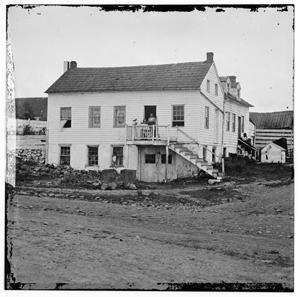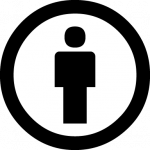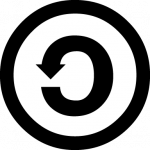
Image courtesy of the Library of Congress.
These materials are from a past semester of this course at the U-M School of Information. For details and a syllabus of the current course, please see https://www.si.umich.edu/programs/courses/675.
Digital imaging technologies are replacing the microfilm camera and photocopier as the primary mechanisms for reproducing print and graphic resources. Digitization practices do not necessarily accomplish preservation goals; only a portion of digitization programs in cultural heritage institutions produce preservation-quality results. In 2004, the Association of Research Libraries issued a position paper that supported the creation of preservation-quality digital images, citing the abundance of available standards and best practices. This course concentrates on the state-of-the-art of standards, techniques, metadata, and project requirements for the production of preservation-quality digital images. The course will consider such standards and practices within the larger context of the representation of information through technological remediation.
Instructor: Paul Conway
Course Level: Graduate
Course Structure: Seven week course with one class weekly
Syllabus
Description
Digital imaging technologies are replacing the microfilm camera and photocopier as the primary mechanisms for reproducing print and graphic resources. Digitization practices do not necessarily accomplish preservation goals; only a portion of digitization programs in cultural heritage institutions produce preservation-quality results. In 2004, the Association of Research Libraries issued a position paper that supported the creation of preservation-quality digital images, citing the abundance of available standards and best practices. This course concentrates on the state-of-the-art of standards, techniques, metadata, and project requirements for the production of preservation-quality digital images. The course will consider such standards and practices within the larger context of the representation of information through technological remediation.
Required and Optional Readings
There are no required textbooks for this course. Required readings (published articles, technical reports, websites) average 150 to 250 pages per week, with optional reading determined by each student’s interests and knowledge. All required readings are either on the World Wide Web (WWW) or accessible through the CTools site for the course.
Resources
Weekly lecture slides and additional resources for class assignment will be posted on CTools.
Grading
- Attendance, class preparation, and participation 20%
- Guidelines Comparative Review 25%
- Digitization Quality Group Project 25%
- Final Examination 30%
Academic Integrity
Academic honesty and responsibility is fundamental to our scholarly and professional community. Students are responsible for maintaining high standards of conduct while engaged in course work, research, dissertation or thesis preparation, and other activities related to academics and their profession. It is expected that students will abide by the provisions of the Rackham Graduate School Policy Statement on Academic and Professional Integrity:http://www.rackham.umich.edu/StudentInfo/Publications/GSH/html/APPC.html#1
Students with Disabilities
Any student who feels that he/she may need an accommodation for any sort of disability, please see me during office hours or email me to make an alternative appointment.
Classroom Etiquette
Students are encouraged to bring notebook computers to class and to use them actively as learning tools. Students should:
- Use laptops for taking notes, conducting research required for activities, and other specific classroom tasks as assigned by the instructor. During class, students should not check e-mail, chat, IM, play games, or perform other off-task activities.
- Engage in class activity as actively as they would in any other class. The computer should not become a barrier to one-on-one interaction, but instead should help facilitate the exchange of ideas and engagement in classroom contact.
- Demonstrate sensitivity to others. Students should not display screen images, including wallpapers and screen savers that might be distracting or offensive to other members of the class.
Office Hours
Students are strongly encouraged to take advantage of at least one office hour session during the course. The instructor is available and willing to advise on project topics, specialized readings, and professional contacts in the digitization area.
Learning Objectives
- Understand and interpret standards and best practices for applying technologies of image conversion
- Identify and describe emerging approaches to preservation quality imaging
- Determine optimal quality parameters for two-dimensional bitmap imaging
- Establish the advantages and disadvantages of imaging and text markup protocols
- Understand approaches to digitization project management
- Read and interpret emerging descriptive and technical metadata standards for still images
Reading List
Week 1: Digitization and Preservation — Overview and Issues
Bolter & Grusin. [1996] “Remediation.” Configurations 4.http://muse.jhu.edu/journals/configurations/v004/4.3bolter.html
Erway and Schaffner. [2007] Shifting Gears: Gearing Up to Get Into the Flow. OCLC. [CTools]http://www.oclc.org/programs/publications/reports/2007-02.pdf Related Website:http://www.oclc.org/programs/ourwork/collectivecoll/harmonization/specia...
Mitchell. [1992] The Reconfigured Eye: Visual Truth in the Post-Photographic Era. Chapter 3, “Intention and Artiface,” pp. 23-58. [CTools]
Primary Research Group. [2010] Survey of Library & Museum Digitization Projects, 2011 Edition. [CTools].
Smith. [1999] Why Digitize? CLIR. http://www.clir.org/pubs/abstract/pub80.html
Week 2: Image Digitization and Imaging Guidelines
Conway. [2008] “Best Practices for Digitizing Photographs” Archiving 2008 Proceedings. [CTools]
Frey and Reilly. [1999] Digital Imaging for Photographic Collections: Foundations for Technical Standards. [CTools]
NISO . [2007] A Framework of Guidance for Building Good Digital Collections. 3rd edition. Bethesda, MD: National Information Standards Organization, December. Chapter on Initiatives, pp. 85-96.http://www.niso.org/publications/rp/framework3.pdf
Sassoon. [2004] “Photographic Materiality in the Age of Digital Reproduction.” In Photographs Objects Histories: On the Materiality of Images, edited by Elizabeth Edwards, pp. 186-202,217-18. [CTools]
Williams/Burns. [2009] “Preparing for the Image Literate Decade.” In IS&T Archiving 2009 Proceedings. [CTools]
Week 3: Digitization Guidelines Today
US Federal Agencies Digitization Guidelines Initiative. Still Image Working Group. [2010] Technical Guidelines for Digitizing Cultural Heritage Materials. http://www.digitizationguidelines.gov/stillimages/documents/Technical.html
Associated Website: http://www.digitizationguidelines.gov/stillimages/
National Library of the Netherlands. [2010] Metamorfoze Preservation Imaging Guidelines. Test Version 0.8 July 2010. [CTools] http://www.metamorfoze.nl/en/methodiek/Metamorfoze Preservation Imaging Guidelines_Version_0.8_July_2010.pdf
Associated Website: http://www.metamorfoze.nl/en/methodiek/conversion.html
Week 4: Color in Scanning and Scanner Benchmarking
Benchmarking: Kenney/Rieger. [2000] Moving Theory Into Practice – Tutorial [MTP]
• Conversion: http://www.library.cornell.edu/preservation/tutorial/conversion/conversi...
• Quality Control: http://www.library.cornell.edu/preservation/tutorial/quality/quality-03....
Burns/ Williams. [2007] "Ten Tips for Maintaining Digital Image Quality." In IS&T Archiving 2007 Proceedings. [CTools] http://imagescienceassociates.com/pubs/50Arch07BurnsWilliams.pdf
Stelmach/Williams. [2006] “When Good Scanning Goes Bad: A Case for Enabling Statistical Process Control in Image Digitizing Workflows.” In IS&T Archiving 2006 Proceedings. [CTools]
Süsstrunk. [2002] “Managing Colour in Digital Libraries,” in Colour Engineering: Achieving Device Independent Colour, John Wiley & Sons, Ltd. [CTools]
Süsstrunk. [2002] “Color Encodings for Image Databases,” Proc. IS&T/SPIE's Electronic Imaging: Internet Imaging, Vol. 4672, pp. 179-185. [CTools]
Week 5: Text and Image in Digitization
Chapman, S. [2003] “Managing Text Digitization.” Online Information Review 27 (1): 17-28. [CTools]
Buzzetti . [2002] "Digital Representation and the Text Model." New Literary History 33(1): 61–88http://muse.jhu.edu/journals/new_literary_history/v033/33.1buzzetti.html
Cope, B. and Kalantzis, M. [2010] “From Gutenberg to the Internet: How Digitization Transforms Culture and Knowledge,” Logos 21 (102): 12-39.
Renear, A. [2004] "Text Encoding." Susan Schreibman, Ray Siemans, and John Unsworth (eds.) A Companion to Digital Humanities. 218–239. http://www.digitalhumanities.org/companion/.
Week 6: Digitization Project Management and Vendor Relations
Fleischhauer. [1996] “Steps in the Digitization Process.” Library of Congress.http://lcweb2.loc.gov/ammem/award/docs/stepsdig.html
Hughes. [2004] “Managing a Digitization Project,” Chapter 7 in Digitizing Collections: Strategic Issues for the Information Manager, pp. 163-207. [CTools]
Kenney/Rieger. [2000] Moving Theory into Practice: Digital Imaging Tutorial. Chapter 9. Management and Chapter 6a. Digitization Chain. http://www.library.cornell.edu/preservation/tutorial/contents.html
Week 7: Metadata for Image Objects and Wrap-up
Metadata for Images in XML Standard (MIX). http://www.loc.gov/standards/mix/
International Imaging Industry Association. DIG35 Initiative Group. http://www.i3a.org/technologies/metadata/
OCLC. [2004] Automatic Exposure: Capturing Technical Metadata for Digital Still Images.http://www.oclc.org/programs/ourwork/past/automaticexposure/ae_whitepape...
Buonora/Liberati. [2008] “A Format for Digital Preservation of Images: A Study on JPEG 2000 File Robustness,” D-Lib Magazine (July/August). http://www.dlib.org/dlib/july08/buonora/07buonora.html
Library of Congress. Digital Project Roles and Responsibilities. [PowerPoint slide] [CTools]
OCLC. [1998] RLG Guidelines for Creating a Request for Proposal for Digital Imaging Services (Including Text Conversion and Encoding). http://www.oclc.org/programs/ourwork/past/digimgtools/RFPGuidelines.pdf
About the Creators

About Paul Conway
Paul Conway is an associate professor in the School of Information. His research interests include the challenges of representing and interpreting audio, visual and textual resources in digital form, extracting knowledge from large-scale image databases, and modeling the use of archives in interdisciplinary scholarship in the humanities. Conway has extensive teaching and administrative experience in the archives and preservation professions. Before joining the Michigan faculty in 2006, he held administrative positions at Duke University, Yale University, the National Archives and Records Administration, and the Society of American Archivists. He began his career as an archivist at the Gerald R. Ford Library on the U-M North Campus. Conway has made major contributions over the past 30 years to the literature on archival users and use, preservation management, and digital imaging technologies. In 2005, Conway received the American Library Association's Paul Banks and Carolyn Harris Preservation Award for his contributions to the preservation field. He currently serves on the Editorial Board of American Archivist and is a Fellow of the Society of American Archivists. more...
- Ph.D. in information and library studies, University of Michigan
- MA in history and administration of archives, University of Michigan
- BA in history, Indiana University

Image courtesy of the Library of Congress.
Jump to:
| Document Title | Creator | Downloads | License |
|---|---|---|---|
|
Assignment 02: Digitization Quality Assessment - GoldenThread Analysis Procedures |
Paul Conway
|
||
|
Assignment 02: Digitization Quality Assessment - Overview |
Paul Conway
|
||
|
Assignment 02: Digitization Quality Assessment - Reporting Guidelines |
Paul Conway
|
||
|
Assignments Overview |
Paul Conway
|
| Document Title | Creator | Downloads | License |
|---|---|---|---|
|
Course Overview |
Paul Conway
|
||
|
Weekly Readings |
Paul Conway
|
| Document Title | Creator | Downloads | License |
|---|---|---|---|
|
Week 1 – Definitions and Issues |
Paul Conway
|
||
|
Week 2 – Image Digitization and Guidelines |
Paul Conway
|
||
|
Week 3 – Digitization Guidelines Today |
Paul Conway
|
||
|
Week 4 – Color in Scanning and Scanner Benchmarking |
Paul Conway
|
||
|
Week 5 – Text and Image in Digitization |
Paul Conway
|
||
|
Week 7 – Metadata for Image Objects |
Paul Conway
|
| Document Title | Creator | Downloads | License |
|---|---|---|---|
|
Course/Resource Archive in Institutional Repository (November 2011) |
Paul Conway
|

Image courtesy of the Library of Congress.
Jump to:
| Document Title | Creator | Downloads | License |
|---|---|---|---|
|
Week 1 – Definitions and Issues |
Paul Conway
|
| Document Title | Creator | Downloads | License |
|---|---|---|---|
|
Week 2 – Image Digitization and Guidelines |
Paul Conway
|
| Document Title | Creator | Downloads | License |
|---|---|---|---|
|
Week 3 – Digitization Guidelines Today |
Paul Conway
|
| Document Title | Creator | Downloads | License |
|---|---|---|---|
|
Week 4 – Color in Scanning and Scanner Benchmarking |
Paul Conway
|
| Document Title | Creator | Downloads | License |
|---|---|---|---|
|
Week 5 – Text and Image in Digitization |
Paul Conway
|
| Document Title | Creator | Downloads | License |
|---|---|---|---|
|
Week 7 – Metadata for Image Objects |
Paul Conway
|



